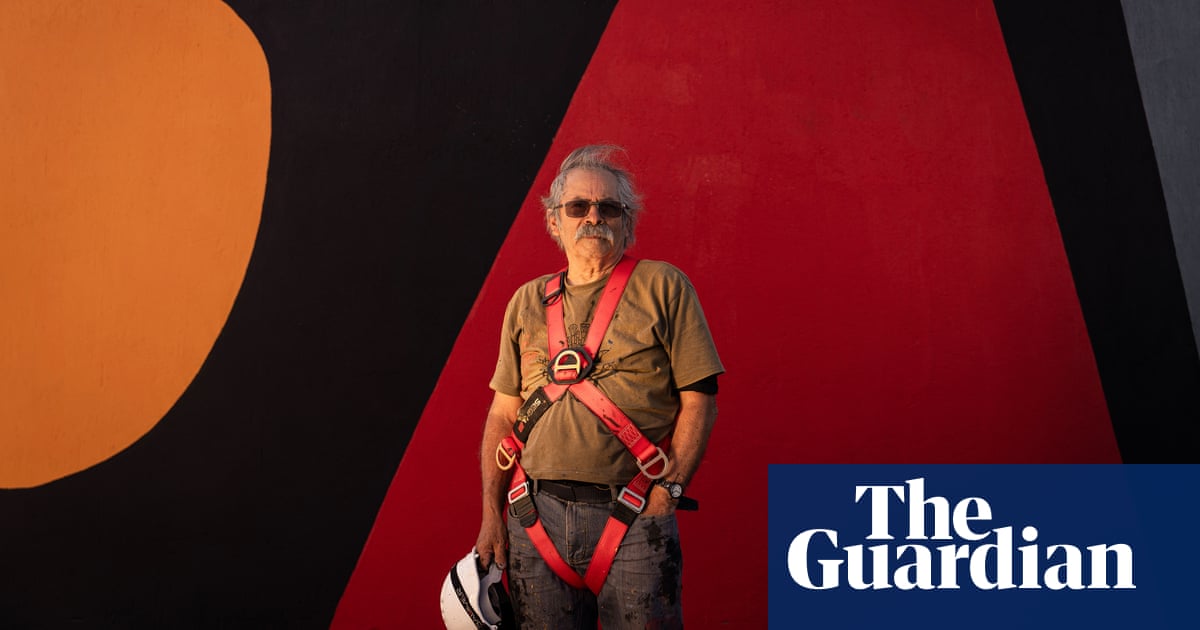In Chile, walls and public buildings are blank canvases to express dissent, frustration and hope.
Bridges across dry riverbeds in the Atacama desert are daubed with slogans demanding the equitable distribution of Chile’s water, and graffiti on rural bus stops demand the restitution of Indigenous lands from forestry companies. Every inch of the bohemian port city Valparaíso is plastered with paint and posters.
“Chile is a nation of muralists,” said Patricio Rodríguez-Plaza, an academic at the Pontificia Universidad Católica de Chile, who studies the language and art of Chile’s streets.
“Our walls are where we communicate – it’s how we use our public space.”
One renowned street artist in paint-spattered jeans spent two weeks transforming a water tower at the country’s national stadium into a powerful symbol of Chile’s battle to remember its past.
“I have always had a strong social conscience,” Alejandro “Mono” González exclaims brightly. “The fight was born inside me, it just didn’t have an escape. There’s so much you can say with paint and a blank surface.”
González, 77, has painted across Latin America and Europe, and his murals adorn hotels and public buildings in China, Cuba and Vietnam.
González’s giant creations combine bright petals of colour, separated by thick black lines, and resemble stained-glass windows.
“I wouldn’t say it’s cheerful, but they’re hopeful colours, which go beyond victimhood, pain and sadness,” he said.
The stadium was one of Chile’s most notorious detention centres, where thousands were held after Gen Augusto Pinochet’s 1973 coup d’état.
At the water tower, detainees rested briefly when led between the dank changing rooms and torture chambers in the grounds of the stadium.
González talks animatedly about how colours vibrate and interact. His trademark moustache twitches and bristles as he talks about his work evoking social struggle, injustice and memory.
And his approach reflects a selfless view of the collective.
“In the streets, anonymity is important,” he says, “The individual isn’t, it’s the message that is interpreted by the viewer that I care about.”
González was born in the city of Curicó, 120 miles (193km) south of Santiago, in 1947, the son of a labourer and a rural worker. At primary school, his friends named their energetic classmate “Mono” – monkey.
The nickname has followed him his whole life.
After dark, González would go out painting with his parents, both committed members of Chile’s Communist party.
In art, he found a release for his burning social conscience.
González joined the communist youth ranks in 1965 to develop its propaganda activities, and painted his first mural at the age of 17 during socialist candidate Salvador Allende’s presidential campaign.
He was among the founders of the Brigada Ramona Parra, a street art and propaganda collective named after a murdered activist, during the heady days of the Allende campaigns.
“We’d go out every night, sometimes to paint murals, sometimes just to write ‘Allende’ on any blank surface,” he remembers.
After Allende won the presidency in 1970, a sinister black spider began to appear on walls, sprayed by the adherents of a fascist paramilitary group.
A battle for the streets began, and it has never truly died away.
In 2019, protesters thronged the streets of Chile’s cities demanding a host of improvements to their lives and an end to the country’s entrenched inequalities.
Across months, hundreds of thousands of Chileans from all walks of life descended on Plaza Baquedano, a square in the heart of Santiago, and the streets became a living record of the discontent.
Those protesters included members of Todas, a collective of more than 100 female muralists who mobilised in a WhatsApp chat.
“We organised ourselves so we could occupy the walls,” said Paula Godoy, 34, an artist and muralist from a southern Santiago suburb.
“We were talking all the time – ‘Where is there a wall free? Where do we need to get this message across?’ – it was a really beautiful period. We were all pulling in the same direction, trying to achieve something.”
Half a century earlier, González was 24 when Pinochet seized power on 11 September 1973, deposing Allende.
The propaganda brigades disbanded. Many went into exile, some were murdered, and others simply “disappeared”.
González slipped into the shadows. He stopped wearing his glasses, shaved off his moustache, and went by the name Marcelo as he worked as a set designer in the Municipal Theatre in Santiago.
When the end of the dictatorship neared, González helped design the most famous campaign in Chile’s political history, the NO campaign against Pinochet’s continued rule in a 1988 plebiscite.
Last year, González was nominated for Chile’s national art prize for a third time. He didn’t win, but a fourth nomination this year would come as little surprise – although he is certain he will never win.
“It would mean recognising everything I’ve done, including the social struggle, because that’s what I represent,” he said.
He says that his mural on the national stadium’s water tower, and its permanence, is of greater importance.
“Chile is very conservative and reactionary – we advance, and then we go backwards,” he says, stepping back from the water tower and shielding his eyes.
“But memory is the one constant. The most important thing is having a lasting effect. This will still be here in 50 years’ time, and people will still have their memory.”
